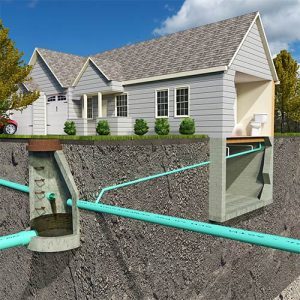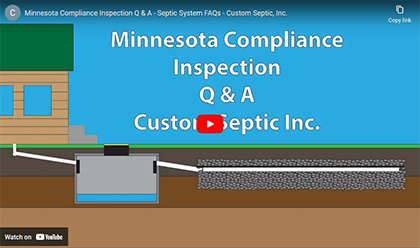 At 15 million American households relying on wells for drinking water, Minnesota accounts for one out of every five. Therefore, it’s vital that septic tank and well owners ensure that their drinking water does not become contaminated if using both as drinking sources. Unfortunately, the United States Environmental Protection Agency doesn’t regulate or set standards for wells but rather offers educational resources; ultimately it falls to private owners themselves to make sure their drinking water remains safe – learn how you can protect the water in your well from contamination by learning how to protect it against potential harm present within its contents – protect both yourself and family from harmful substances present within it!
At 15 million American households relying on wells for drinking water, Minnesota accounts for one out of every five. Therefore, it’s vital that septic tank and well owners ensure that their drinking water does not become contaminated if using both as drinking sources. Unfortunately, the United States Environmental Protection Agency doesn’t regulate or set standards for wells but rather offers educational resources; ultimately it falls to private owners themselves to make sure their drinking water remains safe – learn how you can protect the water in your well from contamination by learning how to protect it against potential harm present within its contents – protect both yourself and family from harmful substances present within it!
Water Wells
Rural homes typically rely on private wells instead of municipally supplied and treated water sources. A water well is an excavation dug deep into the earth to reach underground aquifers, usually needing a softener due to minerals found in soil or rocks, with natural contaminants (e.g., radon and arsenic) as well as agricultural runoff or septic tank runoff potentially polluting it over time. Since well water quality may alter over time, testing your wells annually will give peace of mind while guaranteeing its safety.
How Septic System Impacts Well Water
Installing and maintaining an effective septic system is of vital importance in safeguarding water quality, especially if a malfunctioning or incorrect installation takes place. Groundwater beneath ‘drain fields,’ which filter wastewater from septic tanks into filterable solutions for filtering out pollutants in effluent, will catch any remaining contaminants that remain. Contaminated drinking water poses health hazards to pregnant women, children, and the elderly; installing reverse-osmosis systems can significantly decrease bacteria, heavy metals and trace elements found in effluent outputs.
To protect drinking water supplies, it’s crucial that wells are installed and maintained correctly. They should be located far enough from any septic tanks to allow enough bacterial clearance time before entering. Some states and local governments have minimum standards regarding casing requirements that prevent dirt and water from entering deep wells.
Septic Inspection
Make sure your drinking water is safe by regularly inspecting and maintaining both septic and well systems. New homeowners should also thoroughly investigate these systems to make sure there will be no unexpected contamination of drinking water sources. To prevent drain field overload, schedule regular septic tank pumps. Finally, test your drinking water annually as an extra measure.
Maintenance is key when it comes to keeping a septic system operating effectively, as replacing it can be both expensive and disruptive to your property. Don’t hesitate to contact Custom Septic today if you are interested in learning about our septic pumping/cleaning services, with competitive prices and prompt emergency responses. Schedule an inspection or have your system pumped by calling our team on (763) 218-4769. Serving Minnesota locations such as Andover, Anoka, Becker, Buffalo, Cambridge, Clear Lake, Clearwater, Coon Rapids, East Bethel, Elk River, Park Rapids, Ramsey, Rockford, Saint Cloud, Sartell, and many more!

 Now Accepting Major Credit Cards!
Now Accepting Major Credit Cards!
